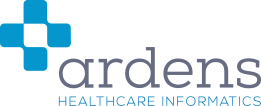The local commissioned service (LCS) templates and reports are provided as part of the Ardens Plus & Pro package and provide GP practices with the ability to record and report on locally commissioned data for your area.
The Ardens Local Tagging Process
Ardens has created a tagging protocol specific to each ICB area, which enables practice staff to view and capture additional localised content in the standard Ardens templates.
This process works automatically (via a protocol) and on launching a patient record will check to see whether the patient has the following type of diary entry in place. This diary entry acts as a trigger to view localised information:

If the patient does not have the diary entry in place, the protocol will add this to the patient record automatically.
There is no further action a practice needs to take in this process, but if you are unable to see localised content when launching the required Ardens templates, it’s worth checking to see if you have a diary, like the one above, is displaying in the Diary tab of the patient record.
To record activity, access the relevant Ardens template. This will display your ICB or place page with details of the specification and data entry fields for recording the information required for payment:

Please note - if you are unable to see this page, please ensure you are NOT using a test patient and that the patient has the correct tagging diary entry within their records.
Monitoring Activity using the Ardens Searches
If your area uses the Ardens searches for LCS data analysis, Ardens will have worked closely with your ICB to ensure the criteria matches the requirements of the specifications.
To access the searches, navigate to the Population Reporting module > Ardens Searches > XXX CCG searches (Ardens) folder (where XXX is your CCG name). The folder will be broken down by sub folders with a folder for each of your ICB specifications:

When running the searches, these can be run as of now (this may differ depending on areas). There is no need for relative run dates, unless looking at a previous payment period.
Some folders will contain patient searches reporting on number of patients, some will contain activity reports reporting on number of clinical codes.
To view the list of patients included in the search results, go to the bottom half of the screen and select Population Included:

Right clicking on a patient will give you the options to access various areas of their records, selecting Check Patient will give you details on why the patient is in the results of that search:

To view the results of a report, select View Results on the EMIS ribbon:

If the report is a patient report, you will see patient details as well as other details specific to the search:

If the report is an aggregate report, it will report on activity and display numbers of clinical codes:


Selecting the total in the report will display the details of the patient.
Further learning - why not access Ardens Academy and enrol on the Introduction to Local Contracts (LCS) module to expand your knowledge.

If you require any further assistance on the process above, please contact Ardens support on: support-emis@ardens.org.uk
